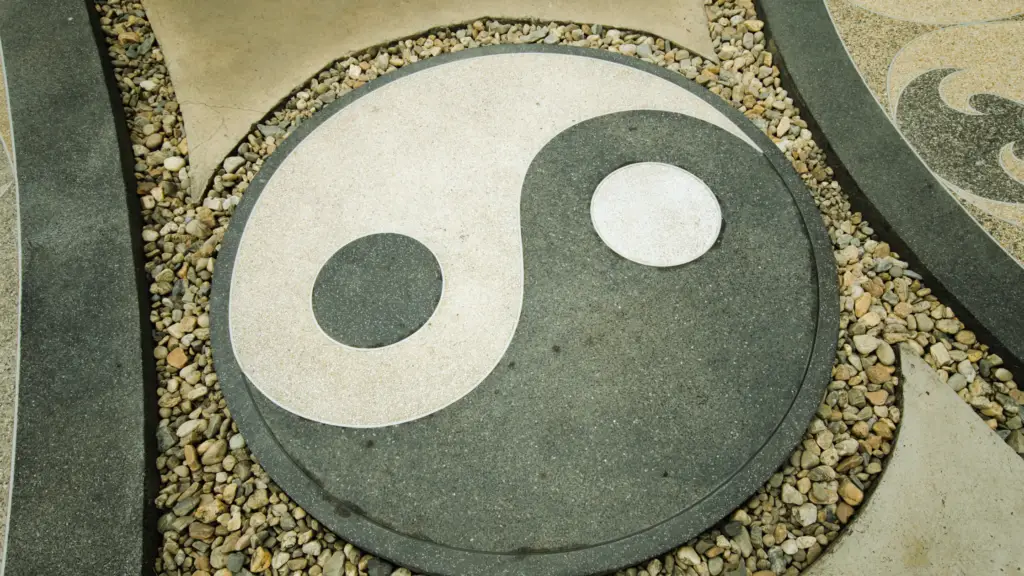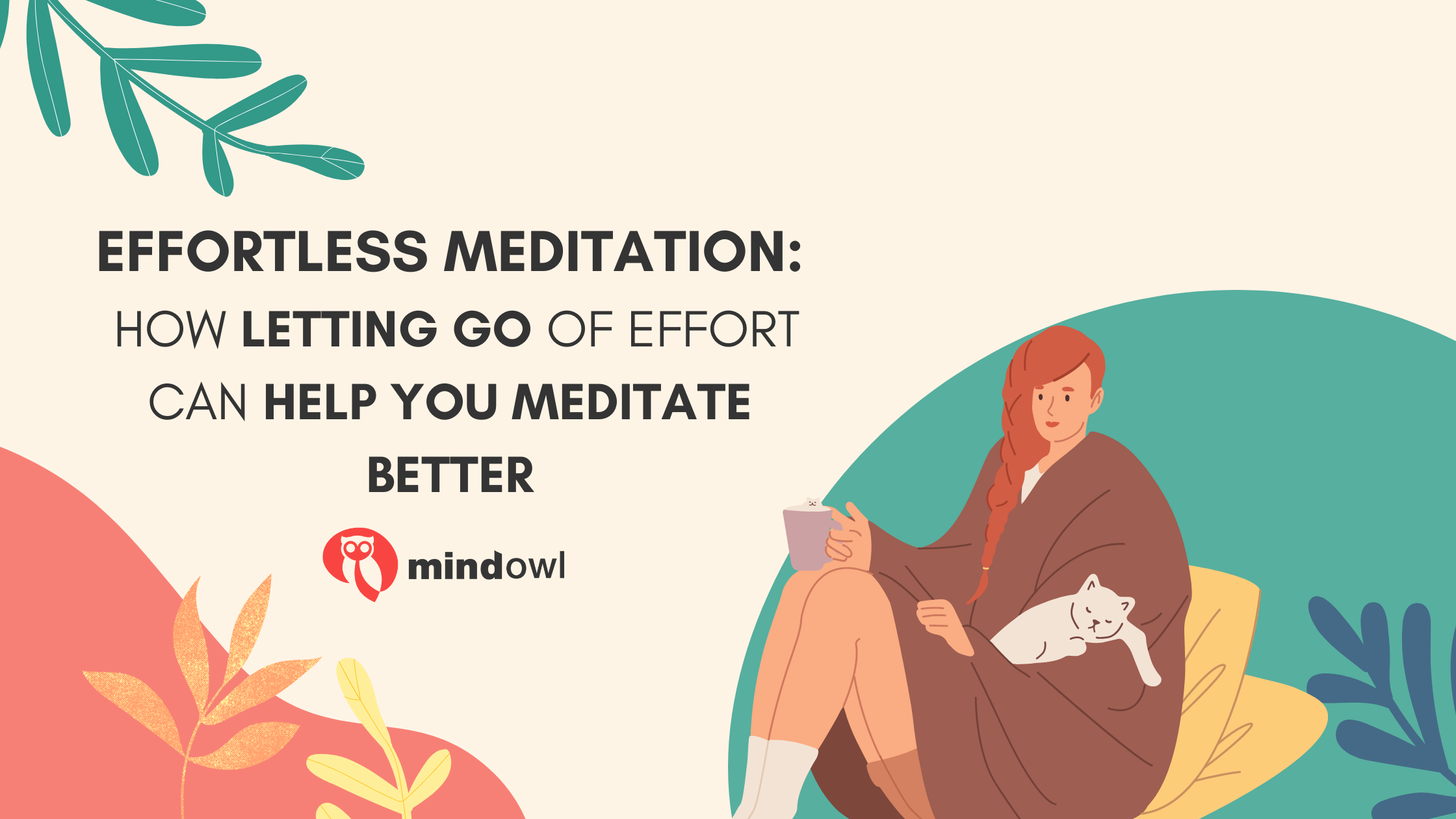Effortless meditation? Can meditation ever be effortless?
The title of today’s article may seem like a welcome break from society’s rhetoric that in order to be successful we must be willing “to give 110%”. This phrase sums up the unrealistic standards that exist around the subject of effort; but is maximum effort really the only route to success? Or is there an alternative way for us to become the best, most successful version of ourselves while maintaining a healthy, balanced life?
In this article, we’re going to be discussing the dangers of seeing effort as a key component to success. We’ll explore the secrets of effortless action, and how we can incorporate effortlessness into our daily routine, as well as our formal meditation practice. This may be the first time you have been introduced to the idea that not trying can actually help you succeed, so don’t be surprised if you resist this concept slightly. If you persevere, however, you may find that effortless action can provide the relief and clarity that’s been missing from your life.
The paradox of effort
We have all come up against challenges and obstacles that stop us from achieving our goals. Usually, we’ll be told that the best way to confront these obstacles is to try harder. We commit long hours and unrealistic quantities of effort and mental discipline to the problem, in the belief that the only reason we have not succeeded yet is our lack of effort. And in some cases, more effort will certainly deliver us the results we were striving for. However, there are many times when this formula for success does not provide the results we wanted. In fact, we may even find that this kind of over-exertion harms us more than it helps us.
Let’s consider this issue in the context of mindfulness meditation. Meditation is often mis-advertised as a relaxation tool, but anyone who has tried it will know that it can require a lot of concentration and effort. Keeping our minds totally blank is not a skill that many of us are born with, and it can be extremely difficult to stay calm and centred despite intrusive thoughts about relationships, work, or dinner. It may seem like the only way to overcome these roadblocks is to try even harder to stay focused, pushing difficult thoughts from our minds and trying to control every aspect of our practice.
Unfortunately, this approach to meditation doesn’t often work. Try to think of meditation as a state, rather than an act. If we expect to remove all the anxieties of life and find awakening or enlightenment, our aims are perhaps a little high – putting more effort in simply isn’t going to be enough. On a near-daily basis, we can see that putting pressure on a situation only results in heightened stress and anxiety levels. This is exactly the opposite of what we hope to achieve through meditation. So think about how you might practise goalless meditation; because often the harder we try, the less successful we will be.

Directed Attention Fatigue
There comes a point for all of us where our brain reaches its capacity, and we are unable to take any more mental stimulation. If we don’t relax our brain’s inhibitory attention mechanisms in these moments, we risk suffering Directed Attention Fatigue. This is not an illness or disorder, but it does create strain on our brains, reducing mental clarity and impacting our ability to function at work, at home, or in social situations.
Directed Attention Fatigue will ensue when we are trying to direct our focus onto one thing while deflecting all the other stimuli in our vicinity. This could happen while we are studying for an upcoming exam, or focusing on an important project for work, for example. Because we believe that this task is the only thing that deserves our attention in the current moment, we will put enormous amounts of effort into repelling the distractions of any other stimuli in our environment.
Our brain’s inhibitory system is at the centre of this reaction. If we are directing our attention onto our project, we may think that we’re giving no effort to distractions like background noise or the view from our window. However, it’s impossible for our inhibitory system to remain solely focused on just one object; it will also be engaged by these stimuli. Therefore, we may end up over-working our brains without even realising it.
There are symptoms of Directed Attention Fatigue to be aware of. These include:
- Irritability
- Inability to perform everyday tasks
- Forgetfulness
- Unaware of social cues
Directed Attention Fatigue is easily rectified by simply relaxing our attention. For more detail on how to use your attention to reduce stress and increase productivity, check out our article on Open Attention.
It is hopefully clear now that effort does not necessarily translate to success, and we must be cautious of how much pressure we place on ourselves – it can lead to very negative results for both our physical and mental wellbeing. So, what meditation techniques can we adopt to bring effortlessness into our practice?
What is effortless meditation?
Unlike other forms of meditation, the art of effortless meditation is about stopping the search for “more” and instead focusing on what you already have. It means recognising that exerting effort trying to manipulate our own experiences can often leave us feeling frustrated and tense, ultimately doing more harm than good. This type of meditation focuses on the present moment and asks you to stop worrying or waiting for something greater than what’s happening right now. This means you can be more satisfied with life as it is.
The Wu Wei concept
Wu Wei is an ancient Chinese concept that literally means ‘non-doing’ or ‘doing nothing’. As you might imagine, it relates closely to our goal of effortless action. A central principle within Daoism, as well as for philosophers like Confucius, Wu Wei can be interpreted in multiple ways. Often, this depends on which form of meditation you choose to practise. However, the main goal is always to reach a point where a person does not need to force effort onto their life.
More effort and exertion doesn’t always mean better results. When trying to cultivate peace, happiness, and virtue, it’s crucial that we’re patient, and don’t try to force results. The ancient Chinese philosopher Confucius argued that virtue needs to be watered and weeded before it can sprout. If crops aren’t growing fast enough, you don’t go out into the field and pull them out in an attempt to get them to grow faster – you wait, you tend them, and you help them to sprout. Of course, you need to put in some effort – but if you force it, you’ll cause damage. Instead, you must gradually guide, strengthen, and cultivate your crops, so that in the long term you can have a successful harvest.
Applied to the practice of meditation, this strategy means that if we cultivate the right attitude, create a space for regular practice, warm-up, and connect with our intention, the meditation will take care of itself, becoming natural and effective after time. Experienced meditators claim that simply exerting more effort won’t necessarily lead you towards better results. Wu Wei, or ‘effortless action’, involves unlearning cultural and social expectations and traditions, channelling an inner sense of goodness and virtue, and ingraining it into our actions until it becomes natural and effortless. At its core is the Confucian idea that by trying consistently for a period of time, you can internalise the things you’re learning so that you’re able to embody them in an effortless way, and therefore stop having to try. Embracing this idea can help you truly experience the benefits of meditation.

Flow states and effortless action
The concept of effortless action is also present in modern psychology in what is called a “flow state”. Flow states are moments when a person is entirely engaged in the task at hand, and capable of performing it without any visible effort. This state is usually associated with professional athletes, artists, and musicians, and a more common way to describe it could be “in the zone”. When people are in flow states, they are very aware of everything happening around them, and yet they’re thinking about nothing other than what they are doing. This state of mind usually occurs when we’re engaged in an activity that we find completely enjoyable and rewarding. Whether it’s sport, writing, drawing or even cleaning, flow states are a great reminder that mindful living doesn’t always mean regular deep meditation – mindfulness is everywhere.
How do you do Effortless Meditation?
We’ve explained how cultivating a sense of effortlessness can help you unlock the benefits of meditation. Now, let’s look at some specific techniques you can use to supercharge your mindfulness meditation.
- Reconnect with nature.
The natural world has hugely restorative qualities. Nature acts without effort; it simply is, because that is the way it should be. Being immersed in nature can therefore help us remember the importance of “just being”, distancing us from some of the stress present in our daily lives. Incorporating mindful walks into our daily routines is a great way to experience the effortlessness of nature more often.
- Surrender the need to be in control.
When our thoughts wander during meditation there can often be an instinctive reaction to try and regain mental control. But as we’ve discussed, this is nearly impossible. Instead, you must notice that your mind has wandered and gently shift your focus back to the present moment without any judgement. Try not to focus on gaining control and thinking “I must bring my attention back to the breath quickly”. Rather, you should simply notice where your attention is, identify wherever there’s some tightness in the way it’s been used, and try to relax it.
- Meditate without an end goal.
Entering your meditation session with no predetermined outcome in mind will allow you to flow through all the stages of meditation without pressure to go down a certain path. This kind of goalless meditation means releasing the constant comparison between your current state and what you want to achieve by the end of the session. It’s fine if thoughts like “Am I getting more relaxed?” or “I must be doing this wrong” occur, but try not to let them disrupt the session.
- Take regular breaks.
Taking breaks will re-centre your efforts and stop you from becoming too deeply entrenched in a specific task. Most of the time, our minds operate in what is called the “doing mode”, which involves always trying to achieve something. Taking a short break allows us to shift to a “being mode”, in which the mind is free to simply be, to observe what is happening with no agenda. This is something you can do throughout your day, using breaks to practise a short meditation exercise like box breathing, 3-minute breathing space, or body scanning.

Try this Acceptance Exercise
Cultivating acceptance and observing what’s happening without trying to change it is key to slowing down your mind. The phrase “What you resist persists” encapsulates this idea. For this ‘Cultivating Acceptance’ exercise, start by asking yourself these questions:
- Can I allow things to be as they are?
- Can I allow things to be as they are without any interference from my mind?
Try and observe your emotions, separating them into their components: physical sensation, internal imagery and internal speech. First, try to separate the physical sensation of an emotion or feeling. Where is it located – in your chest, face, stomach, hands?
Try to perceive the space around these sensations. Then think about the internal images that the emotion has brought on, imagining the memories and thoughts attached to your mind, and again trying to isolate them. Now try to imagine the spaces between your internal speech.
Between each word or sentence spoken internally, there is an interval – try to observe that space, relaxing your tongue on the floor of your mouth as you do so.
These strategies can help us recondition our behaviour when we feel a difficult emotion. Trying to simply observe our feelings and the space around them can decrease our reactivity, and help us cultivate a calmer, more accepting, less racing mind.
To conclude
Effortless action doesn’t mean giving up all hope of achieving your goals, or becoming lazy. Rather, it’s the understanding that putting in more effort isn’t always the answer to having a richer and meaningful life, despite what you’ve been told. Effortlessness means wasting less time putting pressure on your actions and allowing the uncontrollable elements of life to be as they are.
Effortless action is also an exercise that brings our awareness to the present moment and helps us to appreciate what is happening at each moment. When we attempt to control something, it means we are unhappy with what is happening and would like things to be another way. By letting go of the need to control and add more effort to our lives, we can find that most of the time the fulfilment we are seeking is right here, right now. It’s just a matter of getting out of our own way.
MindOwl Founder – My own struggles in life have led me to this path of understanding the human condition. I graduated with a bachelor’s degree in philosophy before completing a master’s degree in psychology at Regent’s University London. I then completed a postgraduate diploma in philosophical counselling before being trained in ACT (Acceptance and commitment therapy).
I’ve spent the last eight years studying the encounter of meditative practices with modern psychology.


